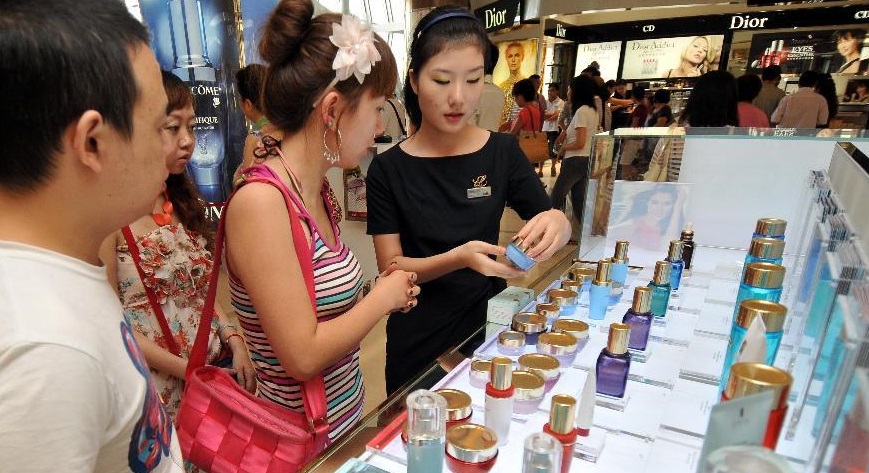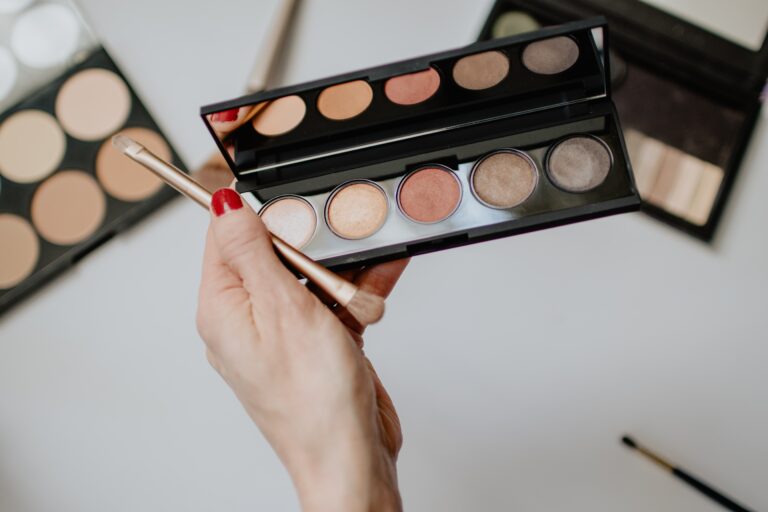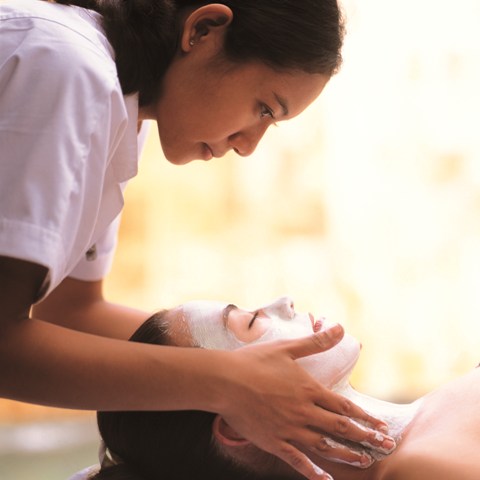After several years of dynamic growth, a number of French cosmetic companies in China is started to diminish at a growing rate. In comparison, the Chinese cosmetic market is expanding. According to Euromonitor, sales of beauty products and make-up in China increased from 6.7% and 10.9% respectively between 2014 and 2015. French cosmetics in China are not the only players – the competition from Japanese, South-Korean, and especially Chinese brands is vigorously increasing.
Until 2013, China was the place to be for foreign cosmetic brands
Foreign companies dominated the Chinese cosmetic market up until 2013. According to Ubifrance, they owned 60% of a 14-billion-euro market. France was especially well represented with brands such as L’Oréal Paris, Lancôme, Clarins, and Dior. In total, they owned 32.77% of shares, ahead of Japan and the United States. At the end of 2012, L’Oréal was marketing 20 brands in China, among which are Maybelline and L’Oréal Paris, whose growth was around 12.4 % per year. Clarins’ online sales increased by 500% between September 2012 and 2013.
Generally speaking, three years ago, foreign companies and joint-ventures were marketing high-end brands while their local competitors remained focused on the low and middle end.
Emergence of local groups in 2014
However, the tide turned in 2014. According to the China Shopper Report 2015, 2014 was the first year during which Chinese companies outperformed foreign brands. Chinese retailers contributed 87% to market growth in 2014. This represents almost 70% of the market value within twenty-six product categories. For eighteen of them, mainly in the sector of skin care and color cosmetics, Chinese brands were sold more than foreign brands. Reasons for this trend may be the influence of education policy from the Chinese government which encourages consumers to buy local brands, as well as the growing concern of Chinese people for their look while caring for their health. This awareness and interest for natural products favored the market segment of herbal cosmetics inspired by Chinese traditional medicine.
This is how Jala group (in Mandarin: 伽蓝集团), thanks to brands like Chando (自然堂) and Maysu (美素), experienced a 15% growth rate between 2014 and 2015. Other brands such as Pechoin (百雀羚), part of the SPDC group, are scoring high with a development strategy targeting small and middle size cities before entering coastal megalopolis with better quality premium products. In other words, local cosmetic brands with a higher quality-price ratio than foreign brands experienced a 10 to 15% boom in 2014.
Chinese companies’ growth continued in 2016
The positive results of local brands were still striking in 2016. For instance, the strategy of Pechoin (百雀羚) became a success during the presales of the 2016 November 11th online shopping Festival on Tmall. The e-commerce platform, dedicated to Alibaba’s B2C products, ranked second in the category of face care with 25,123 units sold for its “Eau Energie”, just behind La Roche-Posay. For this product category, middle and low-end brands’ sales were higher than foreign groups.
These positive outcomes partly resulted from efficient marketing, especially on WeChat, the chat application that also enables users to follow brand news and to buy their products on their WeChat stores. Given this application’s popularity (more than 700 active users), Chinese companies’ marketing is increasingly taking place on WeChat. It enables brand followers to get attractive promotions and free samples and to seamlessly buy products. However, only one out of five beauty brands owns a WeChat store, and half of them are masse-market targeted Chinese brands. They became front-runners and top-sellers on the Chinese market. On the other side, numerous Western brands fail to use WeChat as a tool to get market updates.
Enhanced competition from other Asian brands
Big players from other Asian cosmetic markets like Japan and South Korea are adding to the competition from local groups. The Japanese group Shiseido’s turnover rocketed thanks to a 17% growth rate in China in 2015 for instance. More recently, during its third fiscal semester finishing in March 2016, the Japanese brand from the US global company Procter & Gamble, SK-II, experienced a 20% market share growth in China. The brand also got recognition in 2016 thanks to the publication in April of a campaign calling for the end of discriminations targeting single women older than 25 (‘leftover women’). According to the company, the clip ‘Marriage Market Takeover’ was seen around eleven million times in China and abroad, which shows the strength of the brand’s campaign.
South-Korean groups are also seeing more and more success, especially thanks to the popularity of South-Korean music and TV stars in China, says the Jing Daily. For instance, one of Laneige’s lip product’s sales were boosted after it appeared in a TV show from the Korean Star Song Hye Ko. Featuring beloved Lee Minho and Yoona, the “Sumer Love” campaign from Innisfree was also watched 181,000 times on Youku. The success of these marketing campaigns contributed to Korean cosmetics’ export growth by 250% in 2015. Today, Korean products make up a quarter of China’s cosmetic imports. In 2016, Innisfree was strongly successful with 75,336 units of its facial masks sold during the presales of November 11th on Tmall.
In 2016, South-Korean, Japanese and United-States’ brands represented 70% to 90% of the market regarding sales. Chinese brands represented 22%, the review on cosmetic industry 2016 from Sina Weibo Data Center shows. Aside from L’Oréal Group who had four brands among the total six that Chinese people liked the most in 2016, French brands are unable to maintain their position. Their products are said to be too expensive, and their marketing strategy is not in line with consumers’ way of life.
French cosmetics in China are losing market shares in this highly competitive market
Compared to Asian brands which are making efforts on their marketing and the quality of their products, some brands from French groups such as L’Oréal’s Garnier cannot keep up the pace. “Garnier is neither cheap neither luxurious enough. Chinese consumers are not ready to pay a premium price for a Western br,,and anymore unless it is clearly better”, Shaun Rein, a consultant at China Market Research says to the Financial Times about the withdrawal of Garnier from China in 2014.
To know more about French cosmetics in China, please don’t hesitate to contact us.
Stay Up To Date! Sign up for our Newsletter to Receive the Last Updates.





